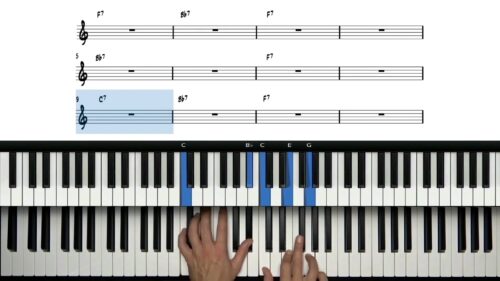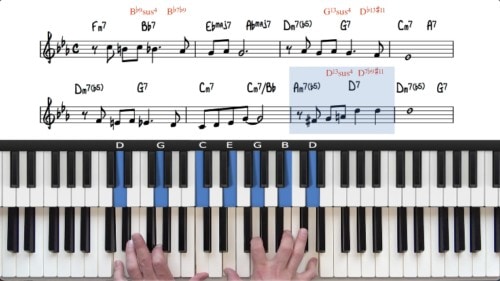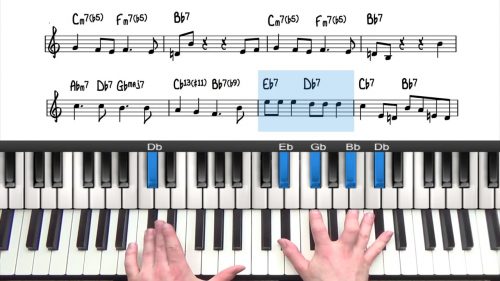Sus Chords For Blues Piano
In this lesson we improve our understanding of suspended chords in blues and slow blues piano.
We have already been using sus chords throughout our course, especially in the space fillers module. In this lesson we start with the most basic sus chord voicing, where the fourth replaces the third, which gives a fresh and modern sound to the dominant 7th chord.
Suspended Passing Chords
After demonstrating the most basic sus chord voicings and their variations, we then shift our focus to specific voicing techniques and application in the 12 bar blues.
We introduce a hip voicing for the C7 passing chord, transforming it into a C9sus sound. This technique involves playing a major triad off the 7th of the chord to create the distinctive suspended sound.
We apply this technique to the 12 bar blues progressions, specifically replacing C7#5 with C9sus to create more spacious passing chord options.
Sus Chords In The Turnaround
Towards the end of the lesson you will learn to alternate between C7#5 and C9sus in the turnaround section of the form. This creates a spacious effect before returning to the first bar to start a new chorus.
After this lesson you will understand the technical aspects of suspended chords and also how to combine these with the other elements that we have covered in this course.
Lesson Downloads
-
Sus Chord Fills Notation File Type: pdf
Practice Tips
-
Begin by understanding the structure of suspended chords. Practice substituting the 4th for the 3rd in basic seventh chords including F7, Bb7, and C7.
-
Experiment with different sus chord voicing options. The most basic sus chord voicing is a major triad off the 7th. Remember that we can double the top and bottom notes of the triad for a bigger sound.
- Apply the sus chords voicings in different parts of the 12 bar blues progression. This works particularly well in bar 3, bar 7, and in the turnaround section.







